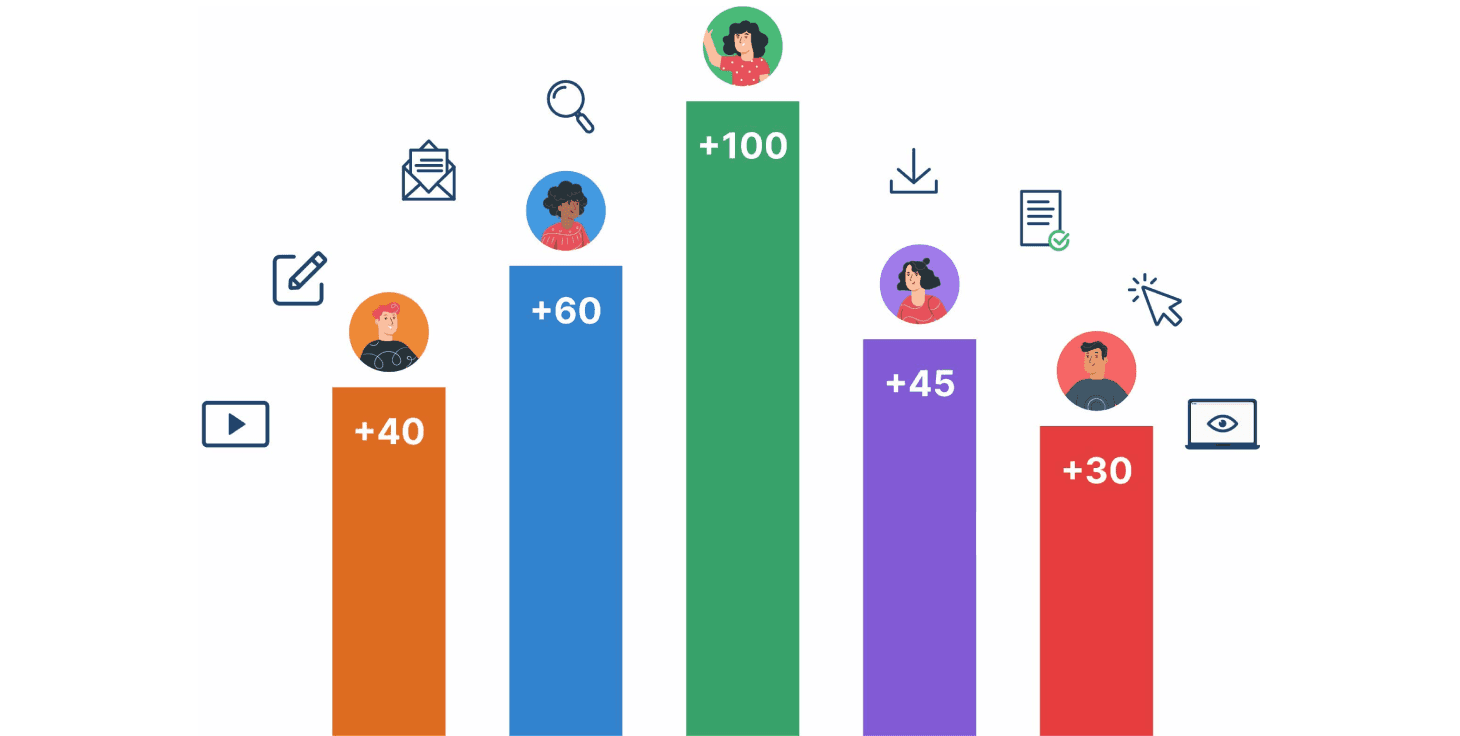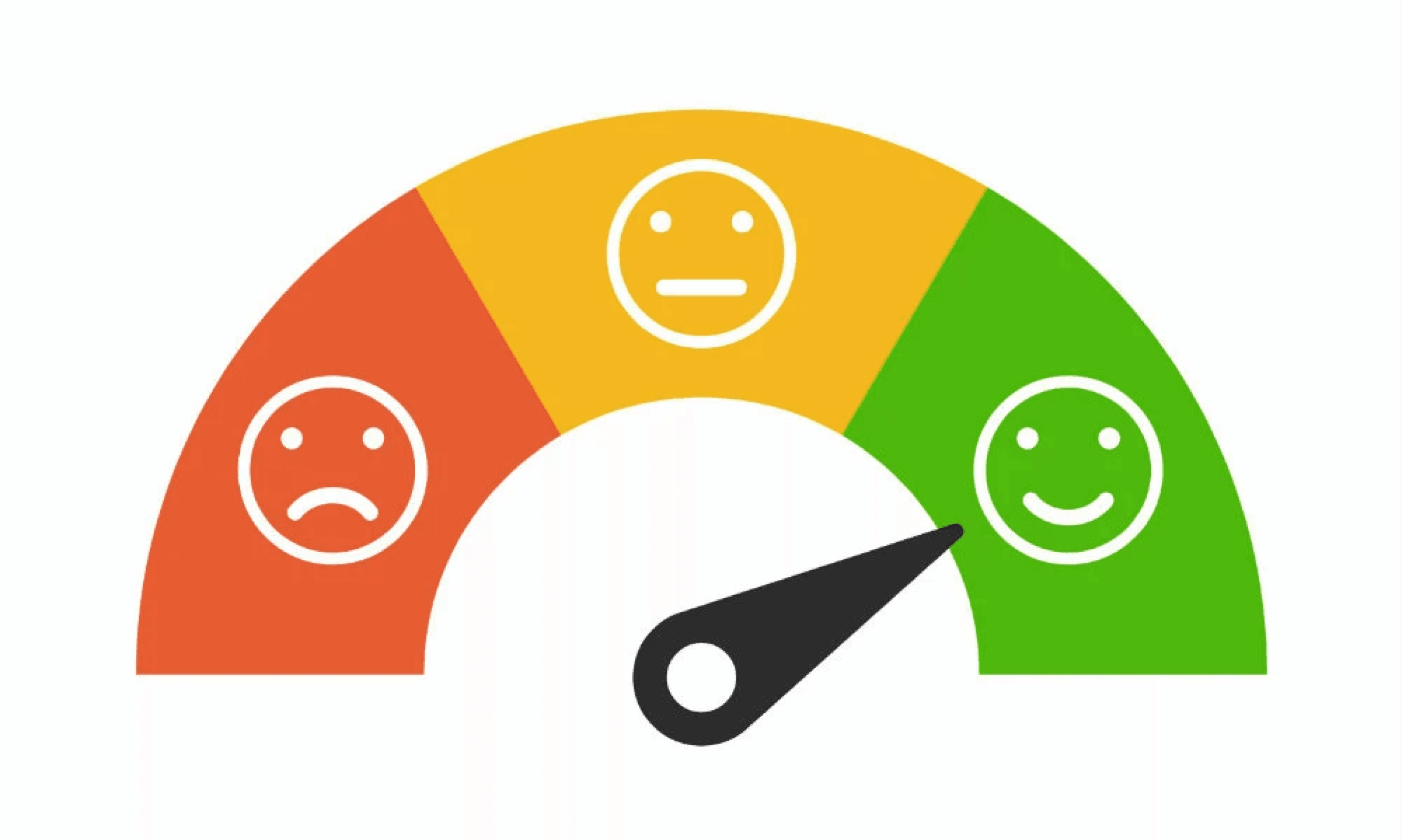Lead Scoring: What It Is and Why You Need It

Picture a company that’s doing a stellar job of filling the top of their funnel — they’re laser-focused on lead generation. But they don’t have a solid plan for evaluating those leads once they’ve got ahold of them. They don’t have an effective way to qualify high-intent leads, so trying to improve conversion rates for every prospect strains their resources. And the real danger: key sales metrics never actually improve because they’re dragging too many leads into the sales process before they’re ready.
Lead scoring is a process for lead qualification that helps you identify warm leads and high-intent prospects at the point in their journey when they’re ready to engage in deeper sales conversations. You’ll identify them faster and boost your revenue by optimizing their journey.
Lead Scoring Is a Process for Identifying High-Value Prospects

Lead scoring helps you identify your strongest leads and prospects early in their buying journey, so you can successfully nurture them through the funnel.
The system works by “scoring” every action a lead might take. They earn points every time they interact with your website, content, or brand, and you track these actions in your customer relationship management system (CRM). As they accumulate more points, they’ll signal to your team that they’re ready for more serious conversations about your products and services.
Lead scoring provides an intuitive way to measure purchase intent and sales readiness and pinpoint where a prospect is in their buying journey. Are they trying to solve a pressing pain point and just gaining awareness of your brand? Or are they considering your product as a solution against a competitor? Similarly, someone who’s reading a blog post for the first time is at a different stage than someone who has actively submitted a form for more information.
Integrate person-based advertising with your lead scoring model
To set up your own lead scoring system, you should assign more points to actions that show higher engagement or greater intent. Clicking a link in an email shows greater intent than just opening the email. Once they reach a certain threshold or lead score, you can start to gauge their interest through sales outreach.
Here’s an example of a lead scoring point system:
- 1 point for reading a blog post or webpage
- 1 point for opening an email
- 2 points for clicking an email CTA
- 3 points for downloading an ebook
- 3 points for downloading a white paper or guide
- 5 points for downloading a case study
- 5 points for watching a webinar
- 10 points for downloading a product brochure
- 20 points for submitting a website contact form
- 30 points for requesting a demo
You need lead scoring to close more deals
Companies with lead scoring in place are better able to identify sales-ready prospects so they can move them efficiently through the funnel. More than a menial system for counting up marketing actions, lead scoring supports well-informed decisions about who to nurture and how to work toward a close.
You’ll move warm leads quickly through the funnel

Once a lead crosses your predetermined threshold, you’ll automatically identify them as a warm prospect worthy of extra attention and resources. You can quickly follow up with those who are sales-ready.
Instead of diverting attention to every lead and shifting your focus, you can lock in on quality leads as soon as they start to warm up. After all, not every lead in your CRM will fit your ideal customer profile (ICP) or even intend to buy from you — no matter how many times they interact with your content.
You might publish a lot of useful, educational content on your blog that brings in a lot of organic traffic each month. Let’s say your target audience is software engineers, and you’ve also roped in some college students who find your content helpful. They might have your blog bookmarked and they’re logged in your CRM, but they’ll probably never download a product brochure or submit a contact form, so they won’t move through the funnel. Effective lead scoring helps you weed them out.
For quality leads who fit your ICP, the earlier your sales reps reach out, the better. Once a lead shows genuine interest in a product demo or sales convo, your team can find out about their budget, role, and product fit to assess SQL readiness and work toward a close.
Without lead scoring, your best prospects could be putting their hands up and showing their intent, but your team won’t have a process to quickly identify them. B2B sales cycles are already lengthy; you can’t afford to wait any longer to move target prospects along. Influ2’s person-based advertising platform lets you key in on the contacts you care most about and serve them personalized ads. Then, track and measure their engagement throughout the buyer’s journey to move to a close faster.
You’ll drive up revenue

Faster timelines to close and a more efficient prospecting journey ultimately lead to revenue growth for your company. You’re prioritizing your best and brightest prospects and nurturing them throughout the funnel, thanks to an efficient scoring system. That can only translate to more dollars and cents on the sales side.
More qualified prospects moving down the pipeline will naturally lead to more revenue. Where lead scoring helps is getting there faster. You’re identifying high-intent prospects sooner and following up when you know they’re engaged and ready for a sales conversation.
Focusing on the best prospects who are well-aligned with your ICP leads to more revenue opportunities. With proper lead scoring and a person-based advertising platform like Influ2, you can track engagement for individual prospects to create a more holistic buyer’s journey. Engaging, personalized buyer’s journeys not only help close more deals but also create such a strong experience for customers that they help bolster the amount of revenue won per deal, too.
Your customers will enjoy a more seamless buying journey

As efficient as it makes lead qualification for your team, lead scoring translates the same experience to your customers as well. They’ll get to enjoy a buyer’s journey that anticipates their needs and provides them with helpful solutions as they’re ready for the next stage.
You don’t want to start selling to prospects too early if they’re still in the awareness stage or at the very top of the funnel. A heavy-handed pitch could turn them off to your brand completely if they’re only looking for resources around pain points.
On the flip side, you don’t want to wait too long to engage a prospect who’s clearly interested in your product or content, especially if it’s middle- or bottom-of-funnel content (like a case study). If you don’t engage them with some sort of pitch, they might start to look elsewhere for a competitor who can help them quickly.
Lead scoring helps you identify the ideal time to follow up more closely with engaged prospects instead of just spamming everyone with cold calls or demo offers from your sales reps. You’ll have a clear threshold for the sales accepted lead (SAL) stage, and you can easily see who’s ready for more serious conversations with a sales rep. Most importantly, you’re keeping the customer experience top of mind to see how your brand can help.
You’ll align your sales and marketing teams
In a well-oiled lead scoring system, sales and marketing are in constant collaboration to assess what’s working and adjust the model as needed.
Both teams work together to determine the most effective points system and set the threshold for qualification. Your teams might agree that your threshold is 60 points before a lead moves to the SAL consideration stage, for instance. From there, they should assess the quality of marketing qualified leads, sales qualified leads, and conversion rates and adjust as needed.
Lead scoring provides a great opportunity for each team to find out what’s working at both ends of the funnel. Marketing can better understand the activities that are driving high-quality, sales-ready leads that consistently cross the lead threshold. They can also understand which nurturing activities, ads, and content types are most effective at nurturing leads through the middle of the funnel and getting to a close faster.
Sales can provide feedback on lead quality and ICP alignment to marketing and also gain some insight into how many leads are entering the top of the funnel in a given period. They can coordinate on lead nurturing and follow-up activities to ensure they’re moving warm leads through the funnel quickly.
Stay on top of results to improve conversion rates
Once you’ve set a lead scoring model and assigned points, track the quality of leads as well as MQL-SQL conversion rates, deal close rates, and more. Your model can always be adjusted to ensure you’re qualifying leads at the right threshold and at the right place in their journey.
Try out a person-based advertising platform like Influ2 to gain deeper insights into your lead funnel and buyer’s journey. You can track individual engagement for ads and campaigns and sync the data with your CRM to enrich your lead scoring system. Learn more about how person-based advertising from Influ2 enhances your models and nurtures sequences.

A proud marketing generalist driven by a strong urge to Always Be Learning (ABL). Nirosha has a career across many marketing disciplines and industries spanning close to 15-years. Now she is taking on the challenge to build out the evolution of Account-Based Marketing to Buying Group Marketing.



